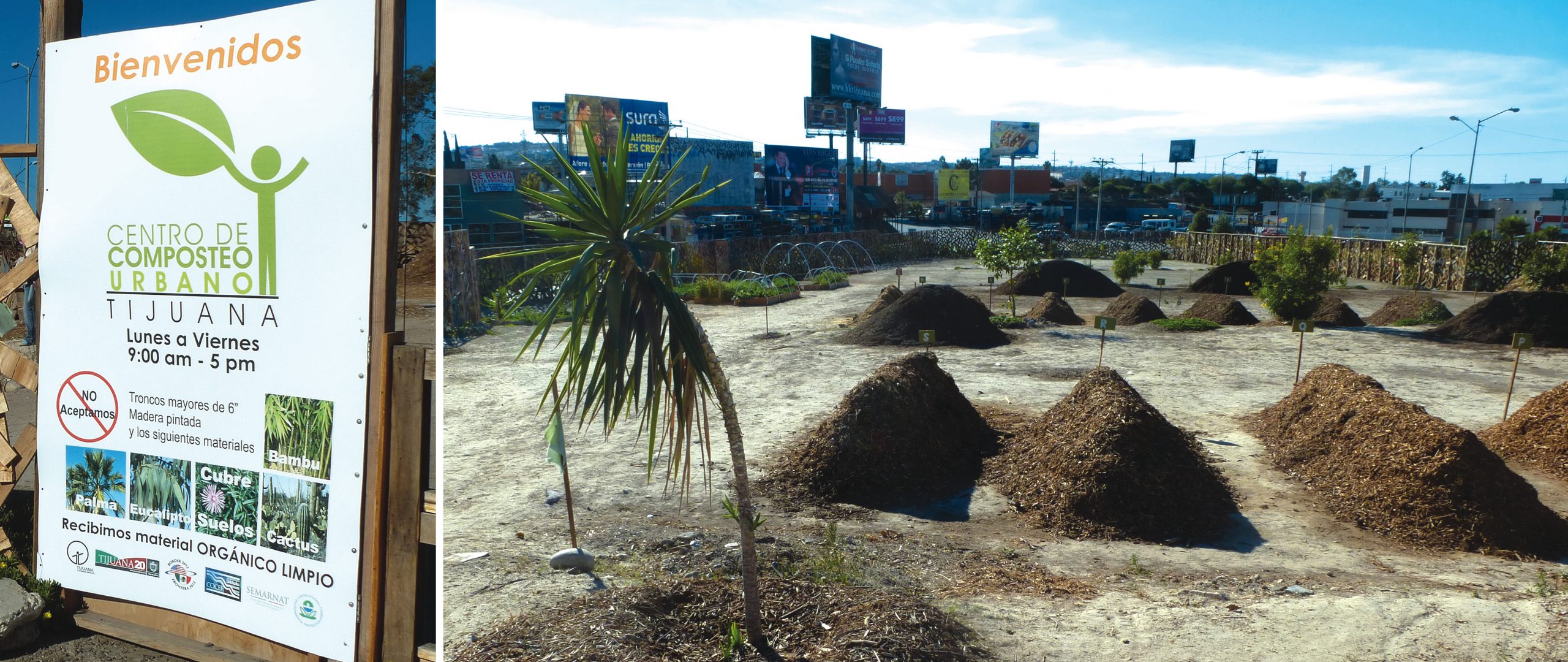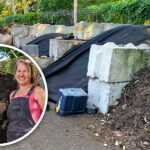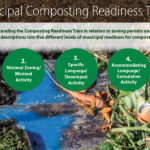A 3 tons per week pilot project in Tijuana, Mexico illustrated the potential of composting, and is a critical step to protecting a watershed shared with San Diego.
Rich Flammer
BioCycle September 2014
The first composting project in the City of Tijuana, Mexico is significant for several reasons. First, it represents a much-needed shift in focus related to resource management in a city that continues to develop rapidly without commensurate infrastructure. With an estimated population of 1.7 million in a 246 square mile area, Tijuana not only has pressure from its own populace and the estimated 80,000 people moving there annually, but also visitors. It is, in fact, the most visited border city in the world. Its gateway, the San Ysidro Port of Entry, is the busiest land-border crossing on earth, with more than 40 million people crossing a year.
Second, Tijuana and its sister city, San Diego, California, share the same critical watershed. While two-thirds of this 1,750 square mile watershed lies in Tijuana, the outlet is in the United States, in the Tijuana River National Estuarine Research Reserve, which is listed by the United Nations as an estuary of international importance. It is the largest remaining coastal wetland in Southern California that has not been bisected by a freeway or railroad. Due to its location on the Pacific flyway, over 370 species of birds have been spotted here.
As Tijuana continues to urbanize, the negative impacts on the estuary increase. Mismanaged or illegally disposed of materials in Mexico contaminate shared ground and surface waters, threaten wildlife, and impact American and Mexican nationals alike.
The binational Border 2020 program, like the previous Border 2012 and Border XXI (Frontera XXI) programs, were developed as a result of the La Paz Agreement. The program is managed by the U.S. Environmental Protection Agency (EPA) and Mexico’s Secretariat of Environment and Natural Resources (SEMARNAT or Secretaría de Medio Ambiente y Recursos Naturales). It establishes “a regional bottom-up approach as the basis for decision making, priority setting and project implementation to address the environmental and public health problems in the border region.”
Born out of the need for better management of resources and preservation of the watershed, the Tijuana Urban Compost Center (CCU) opened in January 2013. Funded by $93,000 in grants from the Border 2020 program, a local nonprofit, Tijuana Calidad de Vida (TVC), developed the facility. “This is an important step towards changing policy in Tijuana,” explains TVC representative Carmen Romo, who serves as director of the compost center. “Tijuana generates more than 772,000 tons of MSW a year, and 40 percent of that is compostable. Very little is recycled and up until now, none has been separated for composting.”
A Tijuana native and architect, Romo and her group have made good use of the funds, not only developing a well-managed pilot-scale composting operation on an undevelopable 1.3-acre easement donated by the City of Tijuana, but also raising awareness about the city’s resource management challenges, conducting a multitude of training sessions and roundtables, and bringing stakeholders from both sides of the border together. A premise of the pilot was that the operation could possibly evolve into a permanent program.
The Border 2020 grant was administered by the Border Environment Cooperation Commission (BECC). “For BECC the inauguration of the first compost center in the city of Tijuana, Baja California is very important,” said BECC General Manager Maria Elena Giner, who is pleased with the program’s dual function of providing compost and mulch through “sustainable practices that will be used in the parks and gardens of the city” and serving “as an educational center for public awareness regarding the benefits of composting.”
Adds Tomas Torres, Director of U.S. EPA’s San Diego Border Office: “Carmen Romo and her team have worked tirelessly in developing this model composting center. With her leadership, the TVC is filling a critical need for Tijuana’s citizens, by raising awareness and education and creating a more sustainable city through zero waste practices such as composting.”
Composting Operations
Michelle Zapata, site manager, oversees the composting operation. She monitors the open windrow process for temperature, moisture and pH. Windrows are turned and watered by hand. During the full production phases of the pilot, eight people worked at the facility, which received about three tons a week of municipal yard trimmings collected by the City of Tijuana. Finished compost was used in city parks. “The city has been a good partner,” says Romo, “but everyone is still in the early phases of understanding the concept of composting.”
While turning by hand and chipping feedstock using a hand-fed BCS Bio 100 Chipper/Shredder and Asplundh chipper sufficed during the pilot phase, these machines are undersized and inefficient to bring the program to scale. TVC recently signed an agreement extension with the city to use the land, and will begin accepting about five tons/week of power-line tree trimmings from the Federal Electricity Commission, a federally run utility company.
But Border 2020 funding has run out, and Romo and her team are exploring ways to transition from a nonprofit to an economically sustainable venture. “What the city really needs is a network of these facilities,” she explains. “That’s our longer term goal. Right now we need to make this facility viable. The EPA and SEMARNAT are still looking at ways to help.” Recently EPA has partnered with the Environmental Finance Center, a network of university-based institutions in the U.S. that look for creative solutions to difficult financial situations, to support the TVC in developing a business plan and seek out possible funders to expand the center’s mission.
The 300 illegal dumping sites identified in Tijuana prove the need for projects like this one. The center, and others like it, can reduce waste in the watershed while creating socioeconomic benefits for the city. Great potential exists for entrepreneurial opportunities and jobs to be created from the approximately 300,000 tons of compostables currently landfilled in Tijuana. Continued binational planning and cooperation, public private partnerships and involvement by nonprofits like TVC will be critical to improve the existing resource management system and realize the myriad benefits of composting.
Rich Flammer of Hidden Resources, a BioCycle Contributing Editor, is a composting and zero waste consultant (www.compostingconsultant.com).














